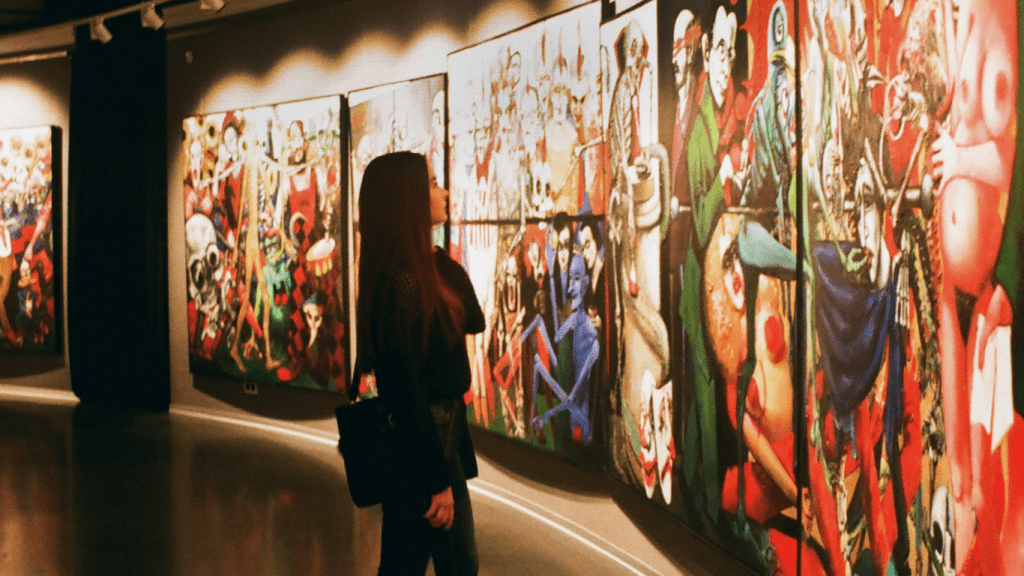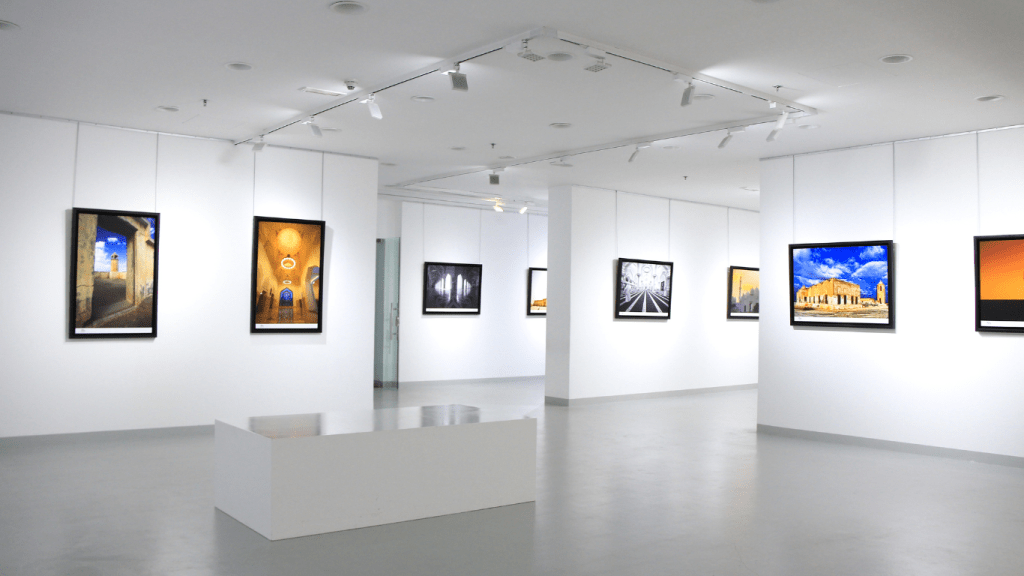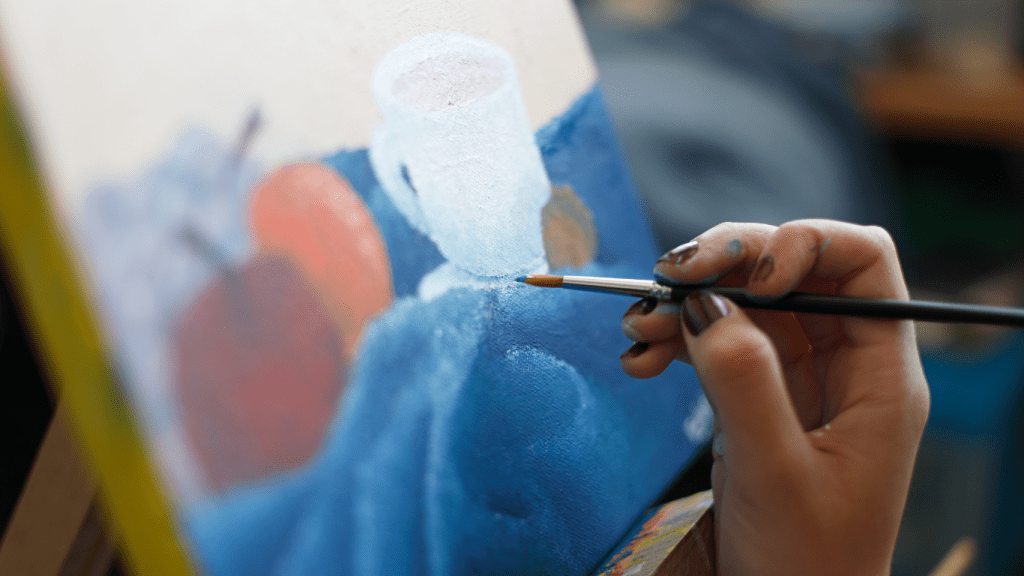1. Introduction: The Truth About Pricing Art (And the Mistakes Artists Make)
A common misconception is that lowering your prices will help you sell more art. Many artists, especially beginners, assume that cheap prices attract more buyers. But the reality is the opposite—underpricing can actually hurt your sales.
Think about it:
- Would you trust a luxury brand selling handbags for $10?
- Would you believe a famous artist is selling a painting for $50?
Buyers associate value with price. If your art is too cheap, people might assume it’s low quality or not worth collecting. On the flip side, pricing too high without justification can scare off potential buyers.
So, how do you price your art correctly?
This guide will walk you through step-by-step, covering everything from art pricing formulas to market research, common mistakes, and expert pricing tips.
By the end, you’ll know exactly how to set the right price for your art—whether you sell online, in galleries, or at art fairs.

2. Why Pricing Your Art Matters More Than You Think
2.1. Pricing Affects Your Brand & Credibility
Your price tells buyers how valuable you think your art is. If your prices are too low, collectors may assume:
✅ You’re an amateur
✅ Your art isn’t unique
✅ The materials used are low quality
If your prices are too high without a reason, they may think:
❌ You’re overestimating your value
❌ You lack experience
❌ There are better artists at the same price range
2.2. Proper Pricing = More Sales & Income Stability
Many artists don’t think of themselves as business owners, but if you want to make a living from your art, you need a sustainable pricing model.
- The right pricing strategy ensures you make money while growing your art business.
- It allows you to cover expenses, materials, and time while making a profit.
- It helps you gradually increase prices as demand for your work grows.

2.3. Art Collectors Take Pricing Seriously
Serious art collectors judge an artist by their pricing strategy. If your pricing is inconsistent, collectors might hesitate to buy because:
- They expect prices to reflect your skill level.
- They compare prices with similar artists.
- If your pricing seems random, they may feel unsure about the investment.
This is why it’s essential to price your art with a structured approach, not just based on emotions or guesses.
3. Factors That Influence Your Art Pricing
Pricing art isn’t just about how much you “feel” it should cost. Several factors affect pricing, including:
3.1. Your Experience Level & Reputation
- Beginners & Emerging Artists: Lower prices help attract first-time buyers.
- Mid-Career Artists: More sales history = higher price points.
- Established Artists: Demand and reputation allow premium pricing.
3.2. Art Medium & Material Costs
- Oil Paintings typically cost more than watercolors due to expensive pigments.
- Digital art pricing varies—prints are cheaper, but unique NFTs can be highly valuable.
- Sculptures & Mixed Media require costly materials, justifying higher prices.

3.3. Time & Labor
- How many hours did you spend on this piece?
- What skills and techniques were used?
- Does the artwork include intricate details that took extra time?
3.4. Artwork Size & Complexity
- Larger pieces generally have a higher price tag.
- Detailed artworks with fine textures require more effort, raising their value.
3.5. Uniqueness & Exclusivity
- Original works cost more than prints.
- Limited edition prints can have premium pricing based on demand.
3.6. Market Demand & Competitor Pricing
- Are similar artists selling at a specific price range?
- Is there high demand for your style or theme?
- Are you in a niche market where prices are typically higher?
All these factors help determine how to price your art competitively while ensuring profitability.
4. Art Pricing Formula: Step-by-Step Guide
Now, let’s get to the real numbers. Here’s a simple formula that works for most artists:
4.1. Step 1: Calculate Your Base Costs
Start with the total cost of materials, tools, and other expenses.
✅ Paint, canvas, paper, brushes, frames
✅ Printing costs (for digital prints)
✅ Studio rent (if applicable)
✅ Shipping & packaging costs

4.2. Step 2: Determine Your Hourly Rate
Every artist should have an hourly rate for their time.
- Beginner artists: $20–$50/hour
- Mid-level artists: $50–$100/hour
- Established artists: $100+/hour
4.3. Step 3: Use the Pricing Formula
(Hours worked × hourly rate) + materials = Base Price
Example:
- You spent 10 hours on a painting.
- Your hourly rate is $30/hour.
- Your materials cost $50.
📌 Calculation:
(10 × 30) + 50 = $350 Base Price
4.4. Step 4: Apply a Profit Markup
A common markup multiplier is 2x or 3x.
- 2x Markup: $350 × 2 = $700 Selling Price
- 3x Markup: $350 × 3 = $1,050 Selling Price
4.5. Step 5: Adjust for Market & Demand
- Check what similar artists are charging.
- Adjust based on experience level & uniqueness.
- Increase prices gradually as your demand grows.
🎨 Pro Tip: Selling Prints? Here’s the Pricing Formula
For art prints, use this formula:
(Printing Cost + Packaging) × Markup + Artist Fee = Final Price
Example:
- Printing cost per piece: $10
- Packaging & shipping: $5
- Artist fee: $20
- Markup: 2x
📌 Calculation:
(10 + 5) × 2 + 20 = $50 Selling Price per Print

5. How to Price Your Art on Different Platforms
Pricing your art isn’t one-size-fits-all. Different platforms have different buyer behaviors, fees, and competition levels. Let’s break it down.
5.1. Pricing Your Art for Etsy
Why Etsy?
Etsy is one of the biggest marketplaces for artists selling handmade and digital art. But because it’s competitive, pricing strategically is a must.
Etsy Pricing Formula
When pricing on Etsy, consider:
✅ Production Costs (materials, printing, packaging)
✅ Your Time (hourly rate × hours worked)
✅ Etsy Fees (5% transaction fee + 6.5% processing fee)
✅ Shipping Costs (free shipping boosts sales)
✅ Market Prices (check competitors)
💡 Example:
- Original Art Piece: $350 base price
- Etsy Fees (11.5%): $40
- Shipping & Packaging: $15
- Final Price: $400+ (to ensure profit)
👉 Pro Tip: Use tools like Etsy’s Fee Calculator to make sure your price covers all expenses.
5.2. Pricing Your Art for Instagram & Social Media
Why Instagram?
Instagram is a powerful platform for selling art directly to buyers without middlemen (like Etsy or galleries). The key is building an audience that values your work.
Instagram Pricing Strategy
- Limited Edition Prints: 2x-3x production cost
- Commissions: Base price + custom work fee
- Bundling: Offer discounts for multiple prints
- Urgency Tactics: “Only 5 available” increases perceived value
💡 Example:
- Digital Print Production Cost: $10
- Artist Fee: $20
- Limited Edition Markup (x3): $90
- Final Price: $90 per print
👉 Pro Tip: Use Instagram’s Shop Feature or DM-Based Selling with clear pricing in captions.

5.3. Pricing Your Art for Art Galleries
Why Galleries?
Art galleries attract high-end buyers but take a commission (usually 40-50% of sales). This means your prices need to be higher.
Gallery Pricing Formula
- (Base Price + Gallery Commission) × Market Multiplier = Final Price
💡 Example:
- Base Price: $500
- Gallery Commission (50%): $500
- Market Multiplier (x2 for demand): $2,000 Final Price
👉 Pro Tip: Exclusive gallery deals allow you to raise prices over time.
6. Common Mistakes Artists Make in Pricing (And How to Avoid Them)
❌ Mistake #1: Undervaluing Your Work
Too many artists price based on emotion rather than strategy.
✅ Fix: Use structured formulas to ensure profitability.
❌ Mistake #2: Not Including Business Expenses
Many artists forget overhead costs like:
- Software (Adobe, Procreate, etc.)
- Studio rent
- Marketing (ads, website hosting)
✅ Fix: Factor in ALL expenses before setting prices.
❌ Mistake #3: Randomly Changing Prices
Frequent price changes confuse buyers and lower credibility.
✅ Fix: Gradually increase prices as demand grows.
7. External Resources & Pricing Calculators
To price your art accurately, use these expert resources:
- Etsy Fee Calculator – Helps Etsy sellers calculate fees.
- Art Business Journal – Pricing Guide – Deep dive into professional art pricing.
- Artfinder – Sell Art Online – Sell and price artwork effectively.

Final Thoughts: Mastering the Art of Pricing
Pricing your art isn’t just about covering costs—it’s about building your brand, attracting the right buyers, and making a sustainable income.
🔹 Start with a structured pricing formula.
🔹 Research your market & competitors.
🔹 Adapt your pricing based on platform & demand.
🔹 Increase prices gradually as you grow.
By following these steps, you’ll set fair, profitable, and competitive prices that reflect your true value as an artist.
👉 Need help pricing your art? Drop a comment below! 🎨🔥

